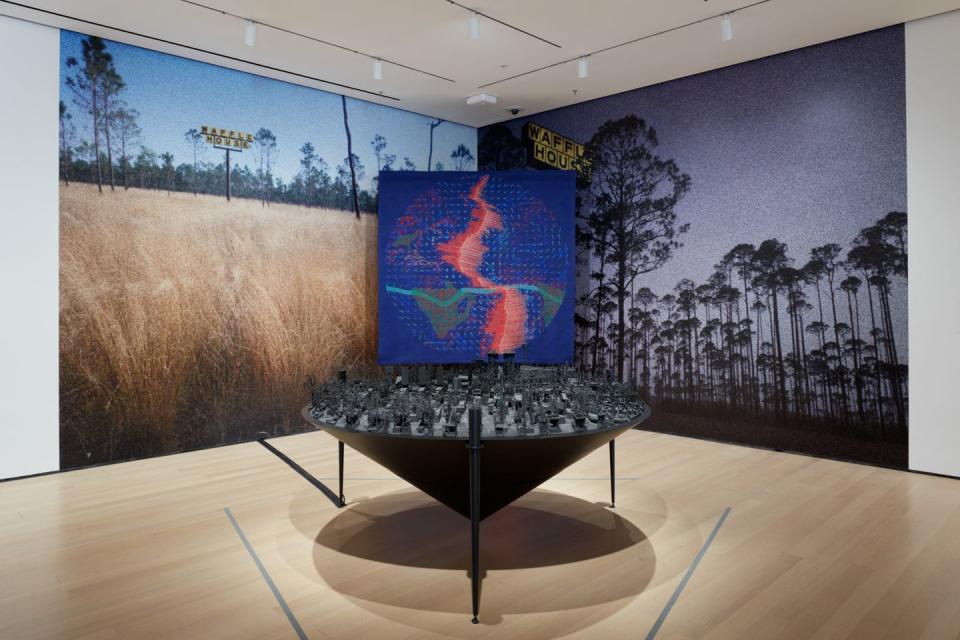Why a Black Design Collective Covered up the Name of a Famous Architect at MoMA

Over the last few months, a number of designers and architects joined together to call for the removal of Philip Johnson's name from any and all leadership titles, public spaces, or honors of any form. Johnson, a prestigious Modernist architect who was the recipient of both the first ever Pritzker Prize and the AIA Gold Medal, has well-documented ties to the German Nazi party and white supremacist ideology.
Johnson—who is known for modernist structures like the Glass House in New Canaan, Connecticut and Manhattan's Seagram Building— was an outspoken fascist sympathizer and spokesperson for the Nazi party in America during the 1930s. He worked closely with extremist politicians, traveled to Germany as a correspondent for an anti-Semitic newspaper, and even attempted to start a fascist party in the U.S., activities which were documented by the FBI.
Although he passed away in 2005, Johnson's legacy has continued to live on. Harvard's Graduate School of Design (where he was an alum) had a building named for him (the Philip Johnson Thesis House) after him and MoMA, where he served as a trustee and director at the Department of Architecture for many years, has a gallery dedicated to him (The Philip Johnson Galleries, floor 3).
In November, 2020, a collective of architects dubbed the Johnson Study Group penned a letter to Harvard and MoMA asking to conceal Johnson's name from public spaces, as it presented Johnson to the public as a role model. The following month, Harvard announced that it would remove Johnson's name. Unfortunately, the museum stayed silent on the issue... until now.
Currently on display at the MoMA as of February 27 is Reconstructions: Architecture and Blackness in America, an exhibit that explores the relationship between architecture and the spaces of the African diaspora. The group responsible for the exhibit is the Black Reconstruction Collective (BRC), a group of Black architects, artists, designers, and scholars. Unfortunately, because the exhibit was architecture-based, it was placed on display in the Philip Johnson Galleries.

So how could an exhibit on the Black experience, meant to advance equality, live inside a gallery named after a man who supported white supremacy? The BRC came up with a design proposal: Cover Johnson's name at the front of the gallery. MoMA accepted.

"We can confirm that the BRC’s tapestry which includes our Manifesting Statement is covering the name of the gallery at its entrance," the BRC said in a message to House Beautiful. What's beautiful about this tapestry is that it is the only work of art in the exhibition created together by all the members of the BRC.
A representative from MoMA explained via email to House Beautiful that the museum accepted the BRC's proposal to cover the gallery name as a way to honor "the communities that the artists and their works represent." It was also revealed that MoMA has launched a rigorous research initiative to explore the full allegations against Johnson.

Interested in checking out the exhibit? Reconstructions: Architecture and Blackness in America is currently on display until May 31, 2021. It features works by Emanuel Admassu, Germane Barnes, Sekou Cooke, J. Yolande Daniels, Felecia Davis, Mario Gooden, Walter Hood, Olalekan Jeyifous, V. Mitch McEwen, and Amanda Williams, as well as new photographs by artist David Hartt. As BRC explains in its manifesting statement: "Paradoxically, the people who did the constructing and must now do the reconstructing are likely to be the same."
Follow House Beautiful on Instagram.
You Might Also Like

